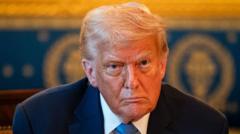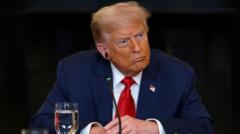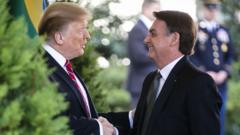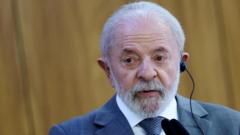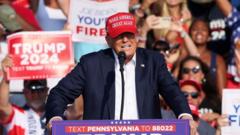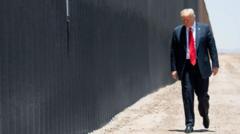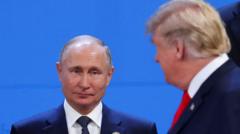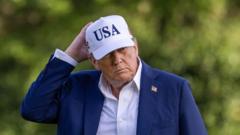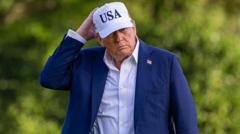Donald Trump's campaign promises include cutting taxes, imposing tariffs, and combating inflation, but economic analysts express skepticism about the feasibility of these goals. As he approaches the implementation stage, the inherent contradictions of his agenda may lead to challenges in fulfilling these ambitious commitments.
The Economic Promises of Trump: Boom or Bust?
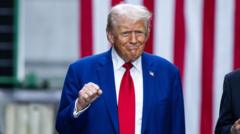
The Economic Promises of Trump: Boom or Bust?
Analyzing the ambitious economic pledges of Donald Trump and the complexities ahead as he navigates potential contradictions in his proposed policies.
The economic landscape of the United States is poised for significant transformation as Donald Trump, the president-elect, lays out his ambitious commitments aimed at rejuvenating the nation’s economy. Among his prominent pledges are an "end to the devastating inflation crisis", sweeping tax cuts, and the imposition of tariffs on imports. Promising a resurgence of the American dream, Trump stated, "We're at the beginning of a great, beautiful golden age of business" during his recent address at Mar-a-Lago.
However, experts in the field caution that Trump may face a myriad of obstacles that could impede the delivery of his ambitious promises. Analysts point towards an array of contradictions inherent in these proposals, complicating their implementation. "There's no clear path forward at this time for how to meet all these goals because they're inherently contradictory,” remarked Romina Boccia, director at the Cato Institute.
Trump’s approach to inflation focuses on reducing prices, despite the historical rarity of price declines absent a crisis. Although inflation has begun to decrease, many economic factors influencing prices are largely external to presidential policy. Trump argues that boosting domestic oil and gas production will alleviate some energy costs; however, experts suggest that this strategy could inadvertently exacerbate inflation if successful.
Throughout his campaign, Trump’s initiatives have catered to a broad coalition. However, economist John Cochrane warns of the "tension" between traditional pro-business factions and nationalists prioritizing border control and international relations. The lack of unified objectives leaves uncertainty about the macroeconomic landscape under Trump's leadership.
Among his more unconventional pledges is the introduction of a blanket tariff of at least 10% on all imports, with even steeper fees for products from China. Some advisors propose that these tariffs might serve as negotiation tools rather than outright implementation, considering the economic implications. Economists predict that broad tariffs could result in elevated prices for consumers and strain companies facing retaliatory tariffs from foreign nations, jeopardizing economic expansion at a precarious time.
In addition to tariffs, Trump's vision encompasses tax cuts and a smaller government to drive economic growth. Yet, analysts suggest that these regulatory rollbacks and tax policy changes might face delays. Observations indicate that the administration could prioritize extending existing tax cuts, potentially driving up national debt amidst rising inflation pressures.
Despite skepticism over the execution of these promises, Trump’s supporters maintain optimism. Many believe that his negotiation skills will yield positive economic outcomes. “If anybody can make better deals to make things more affordable for Americans, it's Donald Trump,” remarked one supporter, highlighting a belief in his business acumen.
While Trump aims to tackle economic challenges from multiple angles—tax cuts, tariffs, and spending reforms—his ability to meld these strategies into an effective economic policy remains a subject of debate. As analysts await the unfolding of his administration, the complexities behind his ambitious promises signal a tumultuous economic journey ahead.

